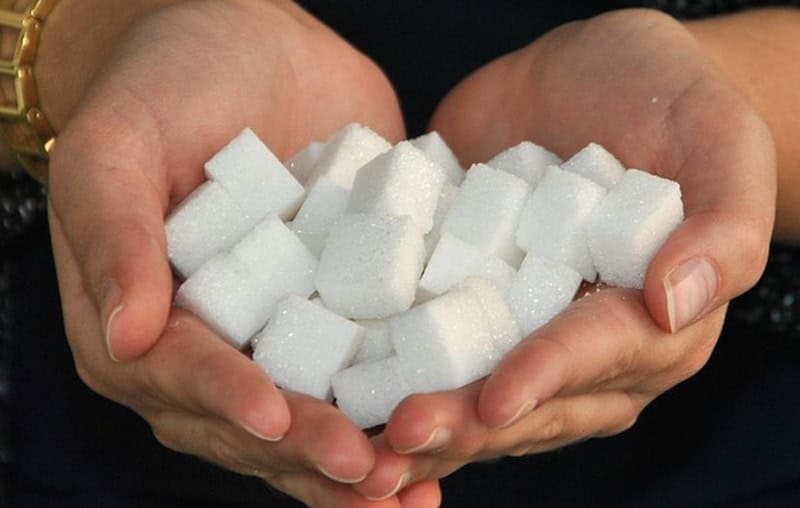The refining process of beet sugar vs cane sugar varies, affecting the final product’s characteristics.
The refining process of beet sugar vs cane sugar varies, affecting the final product’s characteristics.
Blog Article
Discover the Uses and Benefits of Beet Sugar Vs Cane Sugar in Your Daily Diet Regimen
Exploring the distinctive top qualities of beet and cane sugar reveals greater than just their sweetening abilities; it highlights their distinct effects on health and wellness and culinary arts. Beet sugar, known for its refined taste, is often favored in delicate desserts, whereas cane sugar, with its tip of molasses, includes richness to durable dishes. Each kind holds its own nutritional account and glycemic ramifications, welcoming a much deeper understanding of their roles in a balanced diet plan and sustainable consumption practices.
Beginning and Manufacturing Procedures of Beet and Cane Sugar

The distinct climates and dirt types needed for expanding sugar beets and sugarcane add to distinctions in their growing practices and geographic distribution, affecting the economics and sustainability of their manufacturing. beet sugar vs cane sugar.
Nutritional Comparison Between Beet Sugar and Cane Sugar
Despite originating from different plants, beet sugar and cane sugar are nutritionally extremely similar, both largely containing sucrose. Each provides about 4 calories per gram, converting to about 16 calories per tsp. Structurally, both sugars are composed of about 99.95% sucrose, with marginal quantities of other substances like moisture and trace minerals, which do not considerably change their nutritional profiles.

Inevitably, when picking in between beet sugar and cane sugar based on nutritional material alone, both offer similar advantages and drawbacks as they are basically forms of the exact same molecule-- sucrose, offering fast power without various other nutrients.
Influence On Health And Wellness: Glycemic Index and Caloric Material
Checking out further news right into the impacts of beet sugar and cane sugar on health, it is essential to consider their glycemic index and caloric content. The glycemic index (GI) of both beet and cane sugar is around 65, classifying them as high-GI foods, which can trigger quick spikes in blood sugar levels.
Each sort of sugar contains around 4 calories per gram, making right here their calorie web content matching. For those monitoring calorie intake, particularly when managing weight or metabolic health and wellness conditions, comprehending this equivalence is essential (beet sugar vs cane sugar). Nevertheless, excessive intake of any kind of high-calorie, high-GI food can add to wellness concerns such as excessive weight, heart problem, and insulin resistance.
Environmental and Economic Factors To Consider of Sugar Production
Beyond health and wellness influences, the manufacturing of beet and cane sugar additionally raises substantial ecological and economic worries. Sugar beet growing often tends to call for cooler environments and has a reduced geographical footprint contrasted to sugar cane, which grows in exotic regions.
Furthermore, making use of pesticides and plant foods in both beet and cane sugar growing can lead to soil deterioration and contamination, further impacting biodiversity and neighborhood water bodies (beet sugar vs cane sugar). The option in between growing sugar beet or cane often hinges on regional environmental problems hop over to these guys and financial factors, making the sustainability of sugar manufacturing a complex problem
Culinary Applications and Flavor Differences
While the ecological and financial aspects of sugar production are certainly substantial, the option in between beet and cane sugar additionally influences culinary applications and flavor accounts. Beet sugar, originated from the sugar beet plant, is known for its remarkably neutral preference. This makes it a flexible ingredient in cooking, where it does not change the taste of other components. It liquifies promptly and is perfect for use in cakes, cookies, and breads.
Walking stick sugar, extracted from sugarcane, commonly preserves molasses traces, which impart an unique splendor and deepness. This minor molasses taste boosts the complexity of baked items, sauces, and sauces. It is specifically favored in things where a caramel touch is desired, such as in brownies or gingerbread. In addition, the small variation in wetness web content in between beet and cane sugar can influence the texture and consistency of meals, making cane sugar a favored selection for certain dishes that benefit from its distinct residential or commercial properties.

Conclusion
Finally, both beet and cane sugar have distinctive origins and production procedures, supplying similar dietary accounts with small distinctions in sodium web content and taste. While their influence on health, specifically relating to glycemic index and calories, is similar, the choice in between them commonly comes down to environmental, economic variables, and details culinary needs. Recognizing these elements can assist consumers in making notified choices that straighten with their health and wellness objectives and taste choices.
Report this page